Arriving in Rwanda and visiting Kigali and surrounding areas with a special focus on the recent genocide of Rwanda on the trip The Great Eastern Summer.
On the bus towards a country ripped apart by one of the worst genocides in the world I had no idea what to expect. The majority of my understanding of the event was from the hollywood film, Hotel Rwanda, so it was limited at best.
In 1994, an estimated 500,000 to 1 million Rwandan Tutsis were slaughtered during a horrific 100-day period as the world stood by and watched. By the end of the genocide, 70% of the Tutsi, equivalent to 20% of the country’s total population were killed. And so ended one of the most successful genocides in history.
I was curious to see the current state of the country and wondered if my visit would shed any light on how something like this could possibly happen.
Coming from Bujumbura, the bus easily crossed the empty Rwandan border. Lining up on the Rwanda side, we got our passports stamped and boarded the bus to continue to Kigali.
Country 77 complete.
The rural mountain scenery was similar to Burundi, with banana plantations and brick ovens on the side of the road. We eventually arrived into the busy bus station of Kigali. Shifting through the mess of the area, we found a taxi to Hôtel des Mille Collines, otherwise known as Hotel Rwanda.
This landmark property now run by the Kempinski group has a memorial in the parking lot of the staff members that aided in sheltering and saving 1,268 people. Besides the memorial, I did not see any other reminders of the genocide. The pool area was reminiscent of the pool in the film though it wasn’t shot here.
After we checked-in, we came straight out to meet our driver who we asked to wait for us. He took us to Kandt House Museum of Natural History, one of the tourist sights of the city dedicated to the late explorer Richard Kandt. With limited time, we didn’t stay long at the museum.
We decided to go to Nyamata and Ntarama about 30 km away.
Nyamata Church was a Catholic Church where thousands sought refuge during the genocide. We parked in the empty dirt lot outside and walked up to the church entrance. An annoyed guard with a rifle pointed to a sign which indicated no photos or cell phones. We had to leave our bags in a basket and sign in.
Then a friendly and very pregnant lady appeared and introduced herself as the guide. She explained that over 10,000 people were killed in the church and the surrounding area. They barricaded themselves in the building then the military blasted the metal doors with grenades. The impact marks could still be seen on the ground on, mangled door and ceiling. Then they lobbed grenades into the crowded church, before proceeding to enter and execute every person inside with their rifles and machetes.
She pointed at all the clothing piled up in the pews and said that these were left here as a reminder of the event. There were still human bones among the tattered cloth.
An alter stood in the front of the room with objects found in the aftermath including weapons and personal object. The white alter cloth was stained with blood.
She explained that the baptismal bowl was used as a chopping block to behead the victims.
There was one renovated area which was a tomb for an unnamed woman who repeatedly raped before speared with a pole from bottom to top, killing her and her unborn child. On request of the family, the body which was once on display is now in a coffin. Skulls with machete marks rested within a glass display.
We left the church and walked behind the building where mass graves held all the bones in two large crypts. We could enter inside and walk through the grim chambers.
Walking around the building we passed the grave of an Italian humanitarian who was killed for her efforts to help the people.
We thanked our guide and signed out in a log book. She asked us if we could give her coworker a lift into town, which we gladly agreed.
A new larger church across the lot replaced Nyamata, as it can no longer be used as a holy place.
After dropping off the coworker, we drove to the nearby Ntarama Church where similarly 5,000 people were slaughtered.
Just as we arrived the lady was closing up to go home, but then reopened everything for us. I helped her with some of the heavy gates.
She gave us a tour through the church where a similar a massacre occurred. Like the last church, the victims clothes were left in the church and hung on the rafters. Coffins lined the pews. Then we saw the priest’s room where others were killed.
We walked over to the kitchen building where the people were just burned alive where they hid.
Possibly the saddest part of the memorial was the primary school next to the kitchen, where children were systematically swung by their legs and smashed onto the brick wall. The thick blood and brain matter stain is still very visible.
Clothes hung on the wall with messages from other genocide survivors.
A prayer area was located next to a memorial wall with the names of the victims in a garden with what looked like an eternal flame, which seemed to be extinguished.
We helped close up the memorial, signed the registry and gave our guide a lift into town. Then we drove back into the capital to visit the Kigali Genocide Memorial but it was already closed. We decided to see it the next morning.
After we got back to the hotel, we walked to the center of town. Then hopped onto two moto-taxis to a recommended restaurant, Republika Lounge.
Putting on the flimsy helmets provided by the drivers and hopping onto the backs of the Suzuki motorbikes, we sped through the cool night for a fun ride.
The restaurant had a great view over the city and tasty international cuisine. With a burger and some local beers we talked about the powerful memorials of the atrocious events we witnessed.
Cabbing it back to the hotel, we prepared for an early morning.
I had a terrible night’s sleep waking up several times to manage my stomach. Seems that African cuisine was still getting to me.
After breakfast we checked out and we met our driver to go directly to the memorial.
Kigali Genocide Memorial is the most visited and known of the genocide sites possibly due to this central location. Besides the remains of an estimated 258,000 people in mass graves, the memorial also has a museum of the genocide events and an archive for research and documentation.
From the main gate a curt police guard with an AK-47 swung over his shoulder patted us down and searched our bags.
We then explored the memorial. Unlike the church, the graves could not be entered. A large black stone wall had names of victims carved into it. A garden surrounded the buildings.
Inside we walked through the exhibit which has guides services for a fee. The museum was quite well structured with in-depth explanations of the country’s social and political history leading up to and through the genocide.
There was a room with the remains of victims and another with the clothing. An exhibit dedicated to children had cute pictures and descriptions of the child’s life, personality and how the child was killed. Another room had a collection of pictures of victims.
The memorial provided plenty of information, but was not as gut-wrenching as the churches.
We found our driver and left for the bus station where we would catch our ride to Kampala.
As we sat on the bus we saw a police truck pull up and throw half a dozen kids into the back of the truck. One kid started to get in then suddenly did an about-face and ran off. They screamed and chased him, but I don’t think they caught him.
As our bus pulled away from the city, I couldn’t shake the images and stories I witnessed in Rwanda. As we drove by more plantations and villages, I noticed how almost everyone owned a machete for farming. It’s understandable how easy it is to turn those tools into weapons and it’s terrifying how quickly humans can turn into animals.
After a couple of hours, we arrived at the Ugandan border. Time to enter another country with a recent violent past.
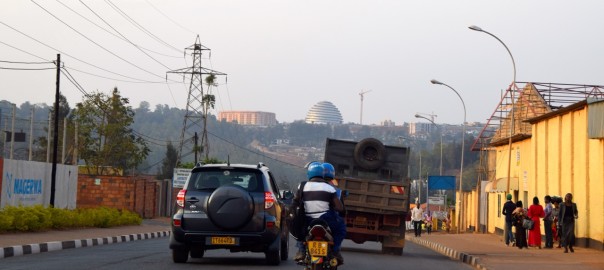
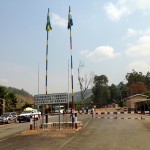
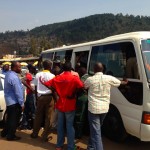
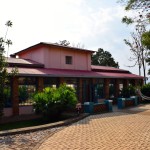
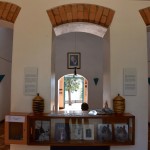
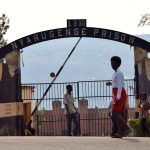
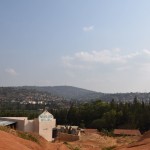
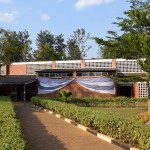
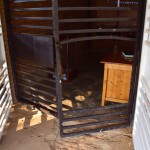

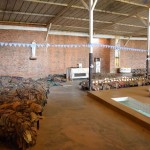
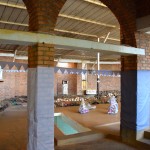
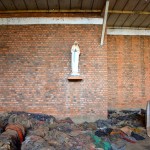
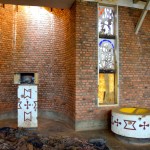
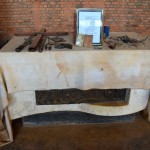
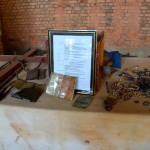
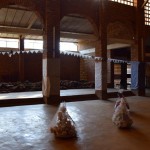
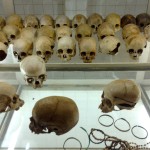
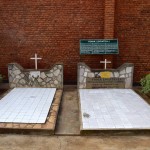
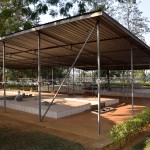
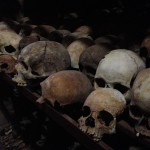
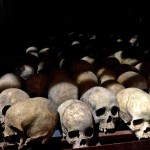
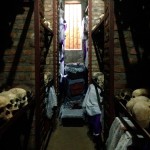
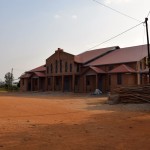
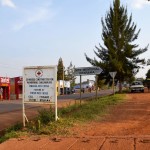
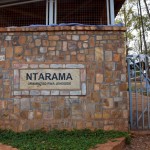
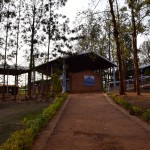
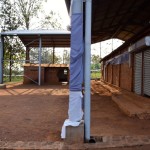
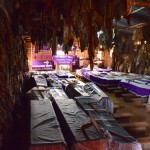
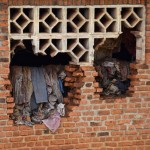
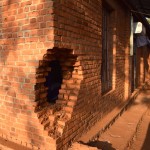
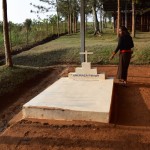
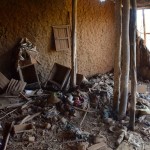
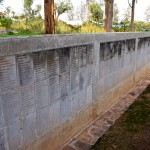
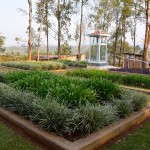
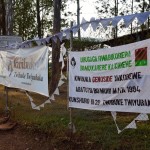
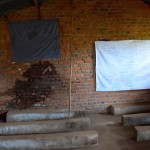
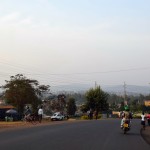
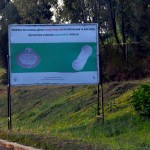
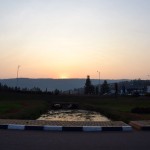
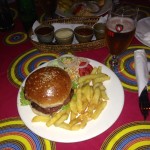
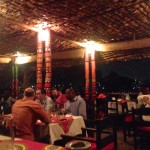
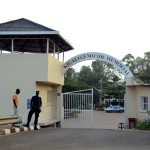
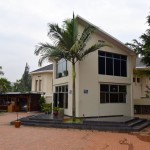

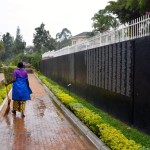
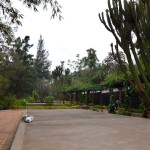
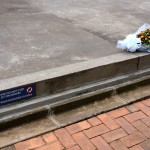
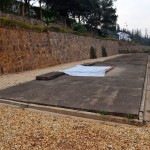
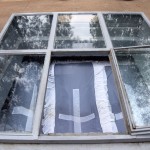
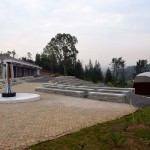
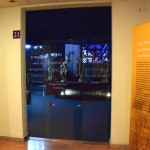
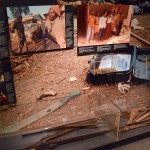
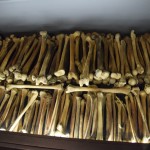
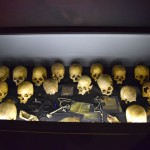

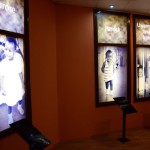
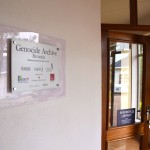
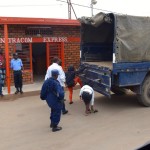
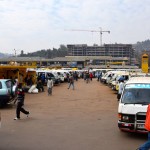
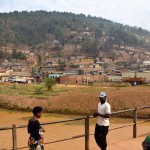
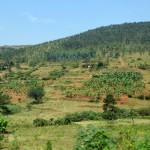
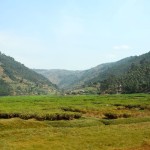
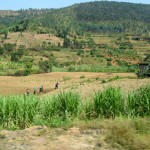
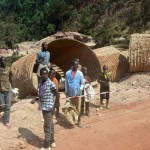
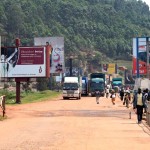
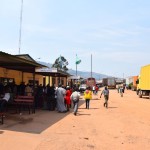
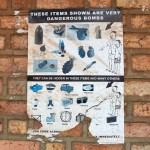
Pingback: Prostitutes and Torture Chambers in Kampala, Uganda | World-Adventurer()